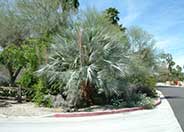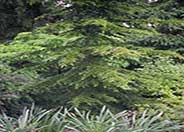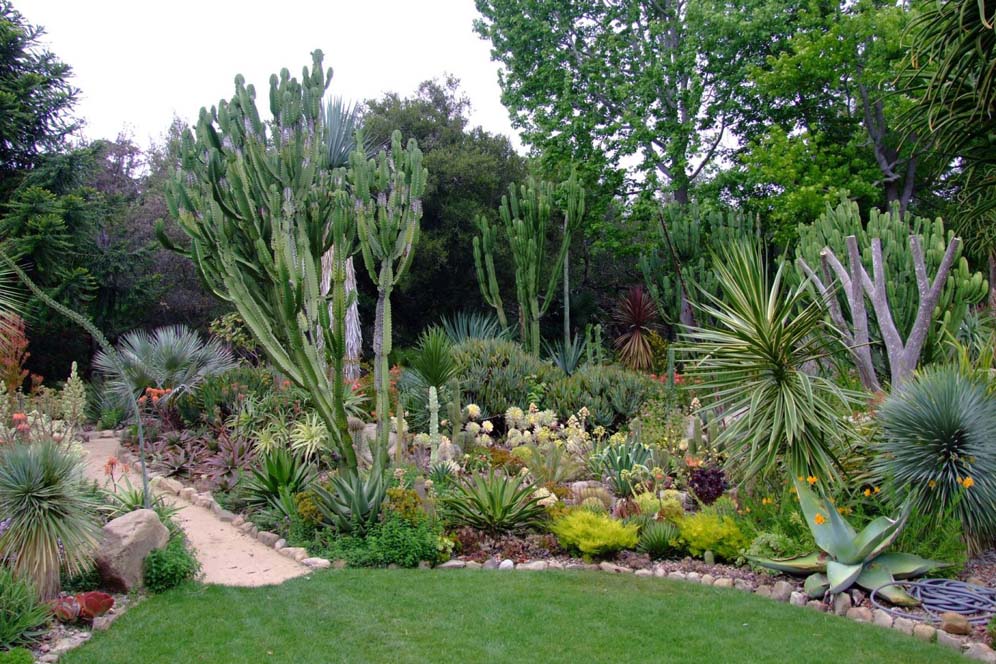
Common name:Big Bend Yucca
Botanical name:Yucca rostrata
This Yucca has blue leaves, a tall narrow trunk, and a spectacular summer display of cream white flowers. It is one of the most attractive tree Yuccas. It slowly forms a trunk to 10' tall. The young are usually unbranched; the older have a few branches. Narrow blue leaves can grow up to 2' long and .5" wide with a sharp term spine. This Yucca prefers full sun or very light shade and rocky, well drained soil. It is susceptible to grubs.Old leaves persist.

Common name:Mexican Blue Palm, Blue Hesper Palm
Botanical name:Brahea armata
This native to Mexico and Baja CA displays a dense canopy of stiff fronds contrasted by graceful inflorescences that arch downward and extend well beyond the foliage.

Common name:Golden Breath Of Heaven
Botanical name:Coleonema pulchellum 'Sunset Gold'
Golden Breath of Heaven is a fine, textured, low growing shrub to 10" high and wide with bright yellow foliage. It is excellent for rock gardens. It is drought tolerant.

Common name:Bauer's Dracaena
Botanical name:Cordyline baueri
Bauer's Dracaena grows to 10' high, and is topped with a 5' wide crown of burgundy leaves. In summer, there are clusters of fragrant white flowers.

Common name:Peruvian-Apple Cactus, Pitaya
Botanical name:Cereus peruvianus
This cactus can grow 25' high and produces large, white blooms. It does best in full sun and dry soil.

Common name:Cedar Of Lebanon
Botanical name:Cedrus libani
This tree will grow 80' high with a broad base. It has a dark gray bark with thick, long branches and dark green, clustered needles. Its cones are 1" long and 1/2" wide and appear from August to October.
Pest Management
Are pests bugging you? If pests are taking over there might be a good reason! Instead of grabbing that bottle of spray, consider using techniques that can solve your pest problems without toxic pesticides.
Click in the green box for more information
| Designer: | Southwest Sanctuary |
Photographer: GardenSoft |
Soils and Compost:
Incorporate compost 6" into your soil to retain water, reduce compaction, feed earthworms, and provide valuable nutrients to your plants.
Water Saving Tip:
Adjust sprinklers to avoid watering sidewalks and driveways.
Integrated Pest Management:
Develop healthy soil for plants that are vigorous and naturally pest-resistant.

